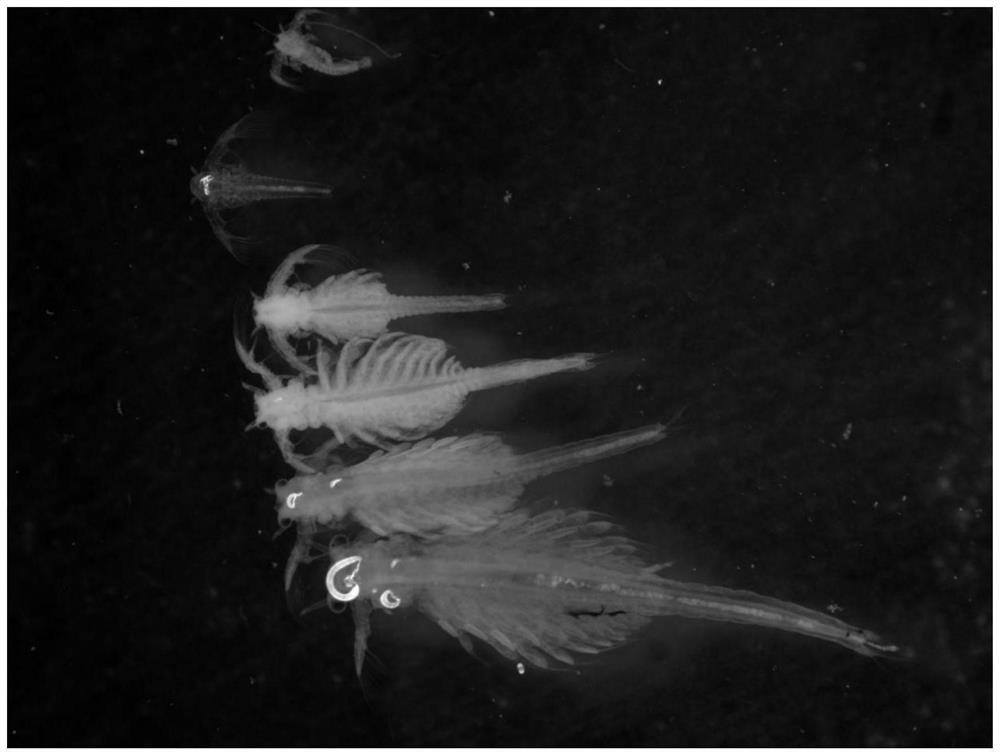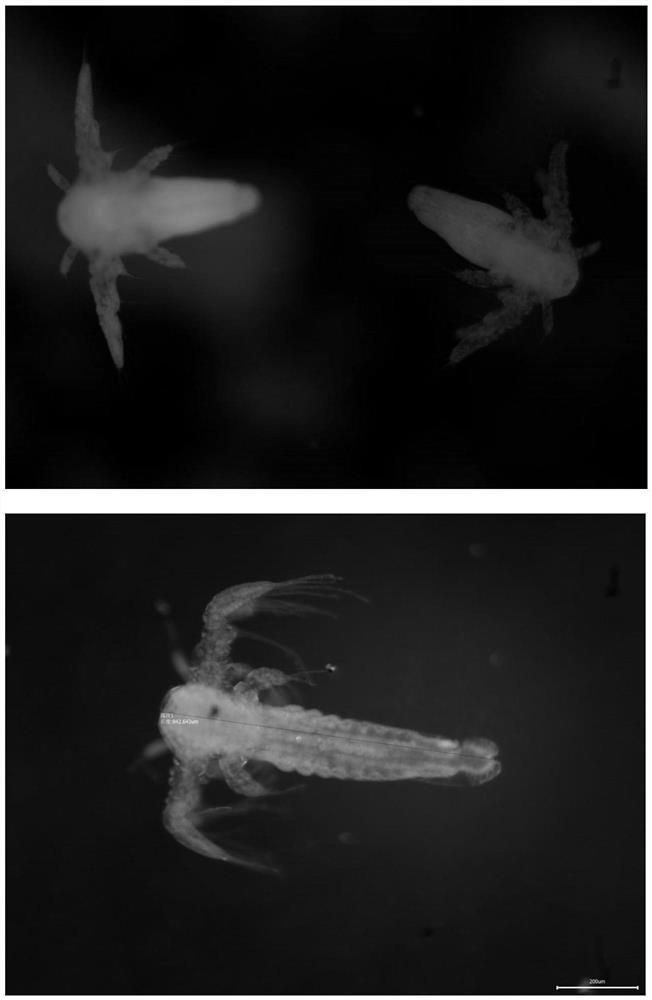A kind of indoor controllable non-live bait fish opening method for raising mandarin fish with cocked mouth
A cultivation method, the technology of cocked mandarin fish, which is applied in the field of aquaculture fry cultivation, can solve the problems of season, nutrition, price restriction, easy infection, difficulty in opening the mouth of cocked mandarin fish, etc., so as to improve the survival rate and feeding rate, improve The effect on survival
- Summary
- Abstract
- Description
- Claims
- Application Information
AI Technical Summary
Problems solved by technology
Method used
Image
Examples
Embodiment 1
[0027] The effect of halochidia on the feeding and survival rate of the tipping of the tipped blender:
[0028] 1) The rooms of the tipped fish are controllable manual hatching and cultivation: squid is placed in a year after aeration, the density is 300-500 pieces / L, full aeration makes the squid affair eggs in the water body. Change water once a day and draw the dead eggs and impurities to ensure water quality. After the fisherna out of the film, a large amount of oil film will be generated. At this time, 3 times should be treated 3 times a day, and the ovasses and impurities should be absorbed to ensure water quality. After the fishermen is limited, the impurities and flocs in the water body must be removed in time to avoid death.
[0029] 2) Incubation and expansion of haloquis: Take commercialized halide eggs, incubation in a water body having a salinity of 10-12 ‰. After incubating the hatchilla, it is placed in a water body having a salinity of 20-25 ‰, and the density of...
Embodiment 2
[0035] The effect of lighting on the hair of the halves of the tipped fish:
[0036] The squid in the fourth day of the removal film was divided into 2 groups. The light and dark time ratio of the control group was 12 h: 12h, the experimental group was 24h light, and the two groups were 800-900μm, and 3 repetitions per group. The cultivation method of the squid is carried out in Example 1. Feeding the haloctorma once a day, 8:00 and 18:00, the water temperature is 23-25 ° C, and the bait and feces are taken out before the feed, and the water is 1 / 3, and the water is fresh. The method and survival rate of the tipped bisquis were statistically statched according to Embodiment 1. Result analysis: Image 6 As shown, the lighting can significantly improve the food rate of the warpone to the haloquin and the survival of the survival after the feeding, and the food group of the 24h light group is 63.33% ± 3.33, while the probiotikisi of the control group The food rate of insect is 53.33...
Embodiment 3
[0038] A gentle tubular fishing method of indoor controllable non-live bait fish, which includes the indoor controlled manual cultivation and nutritional reinforcement of the halogency, and the halocetis is used in the fisherd feeding, the specific method is as follows:
[0039] 1) Chamber-controlled artificial cultivation and nutrient enhancement of halide
[0040] 1.1 The haloquinum is incubated in a salinity of 10-12 ‰ Hydrostation, and the water salinity of the cultivating halide is controlled at 20-25 ‰, and the salt must be sea salt, the halide density is 50-80 / ml;
[0041] 1.2 The length of the haloctis in the artificial cultivation can reach 400-900 μm, which is to discover the halide and eat;
[0042] 1.3 After the shell of the haloctormidium, the nutrient reinforcement is started, and the content of EPA and DHA in the fatty acid composition of the halide in 16-24 h are strengthened, and the content of DHA is significantly higher than that of unopened halide.
[0043] 2...
PUM
 Login to View More
Login to View More Abstract
Description
Claims
Application Information
 Login to View More
Login to View More - R&D
- Intellectual Property
- Life Sciences
- Materials
- Tech Scout
- Unparalleled Data Quality
- Higher Quality Content
- 60% Fewer Hallucinations
Browse by: Latest US Patents, China's latest patents, Technical Efficacy Thesaurus, Application Domain, Technology Topic, Popular Technical Reports.
© 2025 PatSnap. All rights reserved.Legal|Privacy policy|Modern Slavery Act Transparency Statement|Sitemap|About US| Contact US: help@patsnap.com



